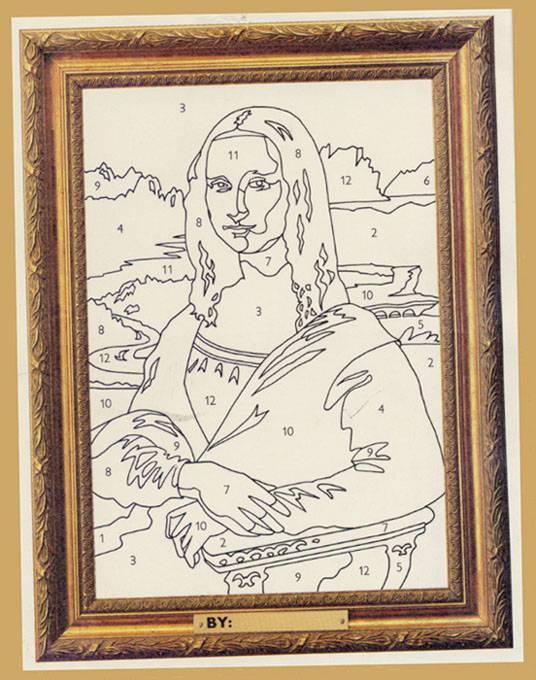Bazooka?

Posted on 09/24/2020 6:46:55 PM PDT by nickcarraway
LEONARDO DA VINCI's masterpiece the Mona Lisa has captivated art lovers for centuries - but now, a scientist who analysed every inch and layer of the famous portrait has discovered hidden details beneath the painter's brushstrokes.
The early 16th Century painting is arguably one of da Vinci’s most famous works and currently resides in the Louvre, in Paris. It’s estimated that 80 percent of their annual 10.2 million visitors attend to see the Mona Lisa. Scientist Pascal Cotte was asked to digitise the painting using a specialist camera, which was able to capture hidden layers beneath the portrait. From his multispectral analysis, he discovered a number of surprising details that could shatter previously held beliefs about the remarkable work.
The early 16th Century painting is arguably one of da Vinci’s most famous works and currently resides in the Louvre, in Paris. It’s estimated that 80 percent of their annual 10.2 million visitors attend to see the Mona Lisa. Scientist Pascal Cotte was asked to digitise the painting using a specialist camera, which was able to capture hidden layers beneath the portrait. From his multispectral analysis, he discovered a number of surprising details that could shatter previously held beliefs about the remarkable work.
Mr Cotte spent a decade analysing more than 1,650 images, which give intricate insight into the Mona Lisa and how da Vinci was able to create it.
He used his pioneering Layer Amplification Method (LAM) on images taken by a multispectral camera that was able to detect light reflected on 13 wavelengths – to capture the interaction between light and matter.
In the layers, he discovered a technique called spolvero had been used, which would have allowed the Italian Renaissance painter to transfer a sketch to his wooden canvas using charcoal dust.
The markings, which suggest the piece was not entirely freehand, had been discovered in other da Vinci works too.
Beneath the Mona Lisa, spolvero marks were found along the hairline and the hand, although that is not the only thing he discovered.
Just to the right of her forehead he noticed what appeared to be the top of a hairpin – a small detail that presents more questions about the work.
Mr Cotte told Express.co.uk: “This hairpin in the sky just to the right of Mona Lisa's head cannot belong to a portrait of a person because in the city of Florence this was not the fashion at the time.
“People had to be dressed in certain ways to denote their profession and for nobility respecting the colours.
“It is not possible for Mona Lisa to have hair like this, it was impossible of the time in the city of Florence.”
Mr Cotte claims this type of hairpin is more typically used for an “unreal woman like a Goddess”, as an allegory for justice or goodness, or in a painting of the Virgin Mary.
The reason for the hairpin, which was marked freehand in charcoal, will remain a mystery but it is speculated that it could have been part of another project entirely.
Mr Cotte suspects two previous works could have preceded the final Mona Lisa observed by the public today.
The spolvero marks along the forehead reveal that da Vinci did change the position of the woman’s head and her hand.
Vaccine scar on her shoulder?
Tear the thing up and burn it...
Contact the BLM communists and turn them loose on it...
Good grief!
Have the rioters looted it yet?
Drink. Your. Olvaltine.
The ML was portrait of a Tranny”??

It would be great to see it in person, but unfortunately being herded like cattle so you can glance at it for a few seconds through plexiglass, that’s barely possible.
it kinda looks like underneath he was flippin’ finger at us all?
They are now trying to BRING DOWN LEONARDO??? omg.

later
Yep - and any charcoal drawing used as a framework would have been freehand - unless he traced of from a copy of National Geographic or some other magazine...the article seems to be a jealousy-laden attempt to cut the master artist down.
I like to visit museums and visit them wherever I go. Was in Scotland last year and visited the Kelvingrove Art Gallery and Museum to see Dali’s Christ of St John of the Cross. Most beautiful thing I’ve ever seen. It’s huge and it just glows. I stood there in awe. And I hate Dali’s surrealistic stuff but apparently this one was commissioned. I’ve never had a painting make my jaw drop before.
That’s interesting. That is one country I have not visited yet. I’ve been to England and Ireland but not Scotland yet.
Loved Scotland. Friendliest people. I’d go back to stay longer with more exploration in a heartbeat.
Sounds great and I need to add to my bucket list. I only have Portugal, Scotland, Iceland, and Poland left in that part of the world.
Love your list! Have fun.
More Dan Brown silliness?.....................
Exactly!!
Disclaimer: Opinions posted on Free Republic are those of the individual posters and do not necessarily represent the opinion of Free Republic or its management. All materials posted herein are protected by copyright law and the exemption for fair use of copyrighted works.